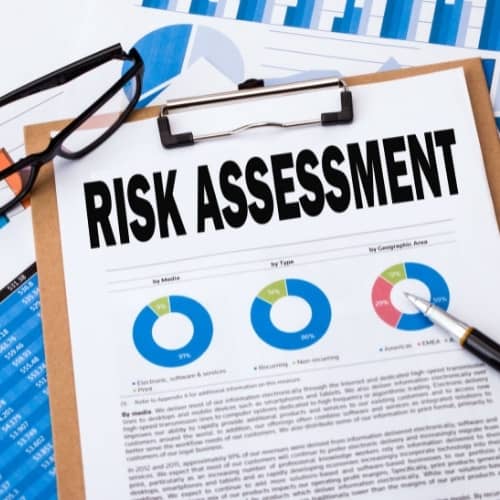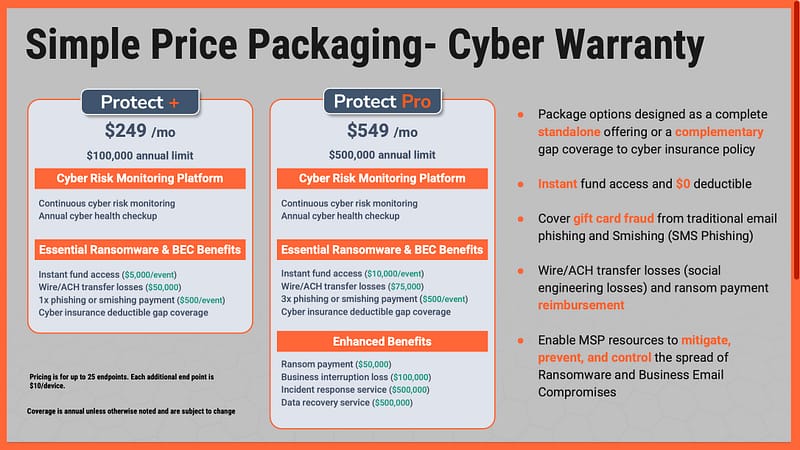Network Risk Report discovers devices on the network and assigns an overall score, as well as the specific score for each of the assessment categories detailed below. The scores are also color-coded to visually signal the tasks that need attention.
Remote Assessment. Remote scanning is also possible through an installed application. The software has the ability to scan and collect system data from individual computers, workstations, or servers. This data collector has versions for Windows, Mac OS, and Linux.
Client Risk Report. You will receive a summary of your overall risk score based on your scan. Along with this summary will be easy-to-understand charts to show your problem areas. We can schedule a time to discuss the document with you and how we can help. Alongside each issue will be the available solutions that you may opt to avail.
The risk report contains all the problems that the network is exposed to. Below is an overview:
Risk score

The risk score contains numerical indicators which indicate significant risk and potential issues.
This is the summary of all the issues identified and should be addressed according to the Risk Management Plan.
- System Risk Score – shows your system’s vulnerability using a color-coded spectrum composed of low, medium, and high indicators.
- System Issue Score – assigns a numerical value instead of a color-coded illustration
- System Profile – reflects crucial data of each computer including:
- Operating System
- Windows Key
- Manufacturer
- Service Tag/Serial Number
- Processor
- OS Install Date
- Last Active Directory Check-in
- System Memory – To enable the team to detect the need to control costs, downgrade, or upgrade. It shows the Memory’s brand, serial number, speed, and size. It also shows aspects of disk space utilization including percentage used, volumes, and the model, serial number, type, and size of physical drives.
Overall issue score

Contains an executive summary of issues during the Network Risk Assessment process and is based on industry-wide best practices for network health, performance, and security. This report may include:
- Non-expiring passwords – these present significant risks by exposing your data to unauthorized users. These are more vulnerable than passwords routinely changed.
- Inactive computers – computers not regularly checked-in pose risks because of missed updates and other risks. They may be rejoined to the network, removed, or scheduled for regular power on.
- Anti-virus and anti-spyware not installed – Without adequate anti-virus and anti-spyware protection on all workstations and servers, the risk of acquiring malicious software is significant.
- Inactive users – Users who have not logged in for a certain period of time could be former employees or vendors. These users pose a significant risk of accessing or using data without proper authorization. Disabling or removing such users is a top recommendation.
- Internet upload and download speed – monitoring internet speeds enables one to correlate network changes with the speed of the internet.
- Assets inventory – a summary of computers, operating systems, and devices enables transparency, proactive provisioning, accurate planning, and decreased stock-outs.















